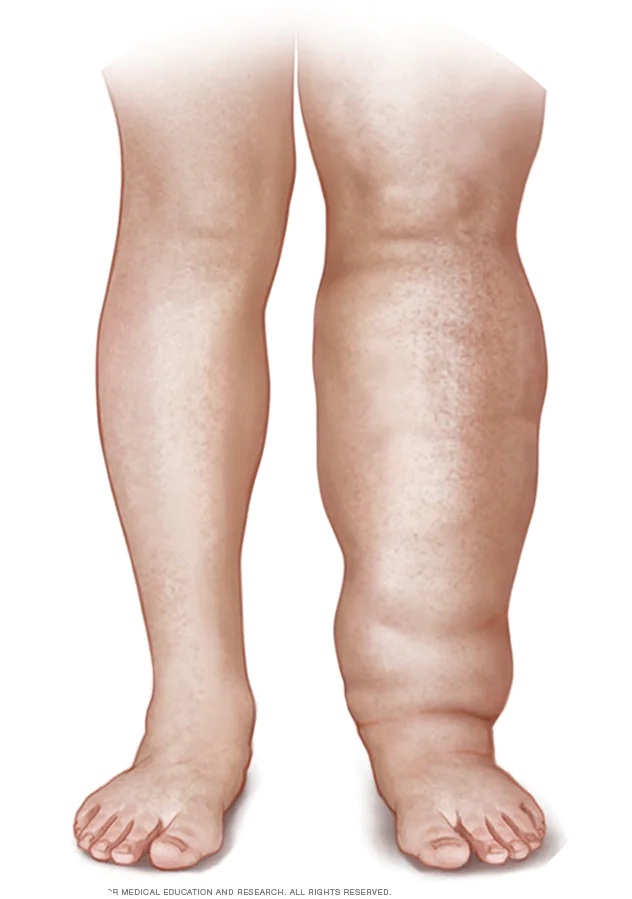Introduction:
Lymphedema, a chronic condition characterized by the accumulation of lymphatic fluid and subsequent swelling, poses significant challenges for those affected. Its origins can be primary, stemming from inherent genetic anomalies of the lymphatic system, or secondary, resulting from external factors such as surgery, radiation therapy, infection, trauma, or obesity. In this informative blog post, we will delve into the intricacies of lymphedema, exploring its causative factors, common symptoms, and the diverse array of treatment options available, with a particular emphasis on the efficacy of compression pumps in managing this condition proficiently.
I. Causal Factors of Lymphedema:
The underlying causes of lymphedema can be categorized into primary and secondary classifications. Primary lymphedema arises from inherited genetic aberrations that impede the proper functioning of the lymphatic system. On the other hand, secondary lymphedema manifests as a consequence of external factors, including surgical interventions, radiation therapy, infections, trauma, or excessive weight. Gaining a comprehensive understanding of these causative factors is crucial for devising efficacious treatment plans.
II. Manifestations of Lymphedema:
Recognizing the telltale signs of lymphedema is imperative to ensure timely detection and intervention. Common indicators encompass persistent swelling in the affected limbs, a sensation of heaviness or constriction, diminished flexibility, discomfort or pain, recurrent infections, and alterations in the texture of the skin. In the event of these symptoms emerging, it is imperative to promptly seek the guidance of a healthcare professional.
III. Treatment Modalities:
A. Manual Lymphatic Drainage (MLD): This specialized massage technique, performed by skilled therapists, facilitates lymphatic fluid flow and diminishes swelling. MLD entails gentle, rhythmic movements designed to stimulate lymphatic drainage.
B. Compression Therapy: A cornerstone of lymphedema management, compression therapy involves the application of compression garments, bandages, or dedicated compression pumps and devices. This therapeutic approach augments lymphatic flow, mitigates swelling, and impedes the progression of the condition.
C. Exercise and Physical Therapy: Regular engagement in physical activity and tailored exercises targeting the affected limbs can enhance lymphatic flow, reduce swelling, and improve overall mobility. Physical therapy sessions may be recommended to establish personalized exercise regimens.
D. Skin Care and Hygiene: Maintaining meticulous skin care is paramount for individuals grappling with lymphedema, as it aids in averting infections. This encompasses scrupulous hygiene practices, diligent moisturization, vigilance in preventing cuts or injuries, and cautious nail trimming.
IV. The Role of Compression Pumps:
Compression pumps, also referred to as pneumatic compression devices, are instrumental in the management of lymphedema. By utilizing air pressure to exert external compression on the affected limbs, these devices effectively facilitate lymphatic fluid movement and alleviate swelling. Sequential gradient pumps, in particular, apply pressure in a wave-like manner from distal to proximal areas of the limbs, optimizing lymphatic drainage.
I. Advantages of Compression Pumps:
The utilization of compression pumps proffers an array of benefits to individuals grappling with lymphedema, including:
- Enhanced lymphatic flow and reduction of swelling
- Improved pain and discomfort management
- Prevention of recurrent infections
- Heightened mobility and flexibility
- Customizable settings to accommodate personalized treatment
- Convenience and user-friendliness within the comforts of one’s home
Conclusion:
Lymphedema, as a chronic condition, necessitates meticulous management and treatment. A comprehensive grasp of its etiology, recognition of symptoms, and exploration of treatment modalities are pivotal steps towards effectively addressing this condition. Among the various treatment options available, compression pumps, in conjunction with other therapeutic modalities, constitute a valuable tool for reducing swelling, enhancing quality of life, and promoting overall well-being for individuals contending with lymphedema. Should you or someone you know be afflicted by lymphedema, we strongly advocate consulting a healthcare professional to determine the most suitable treatment plan, which may incorporate the utilization of compression pumps as a vital component of a holistic approach to lymphedema management.



